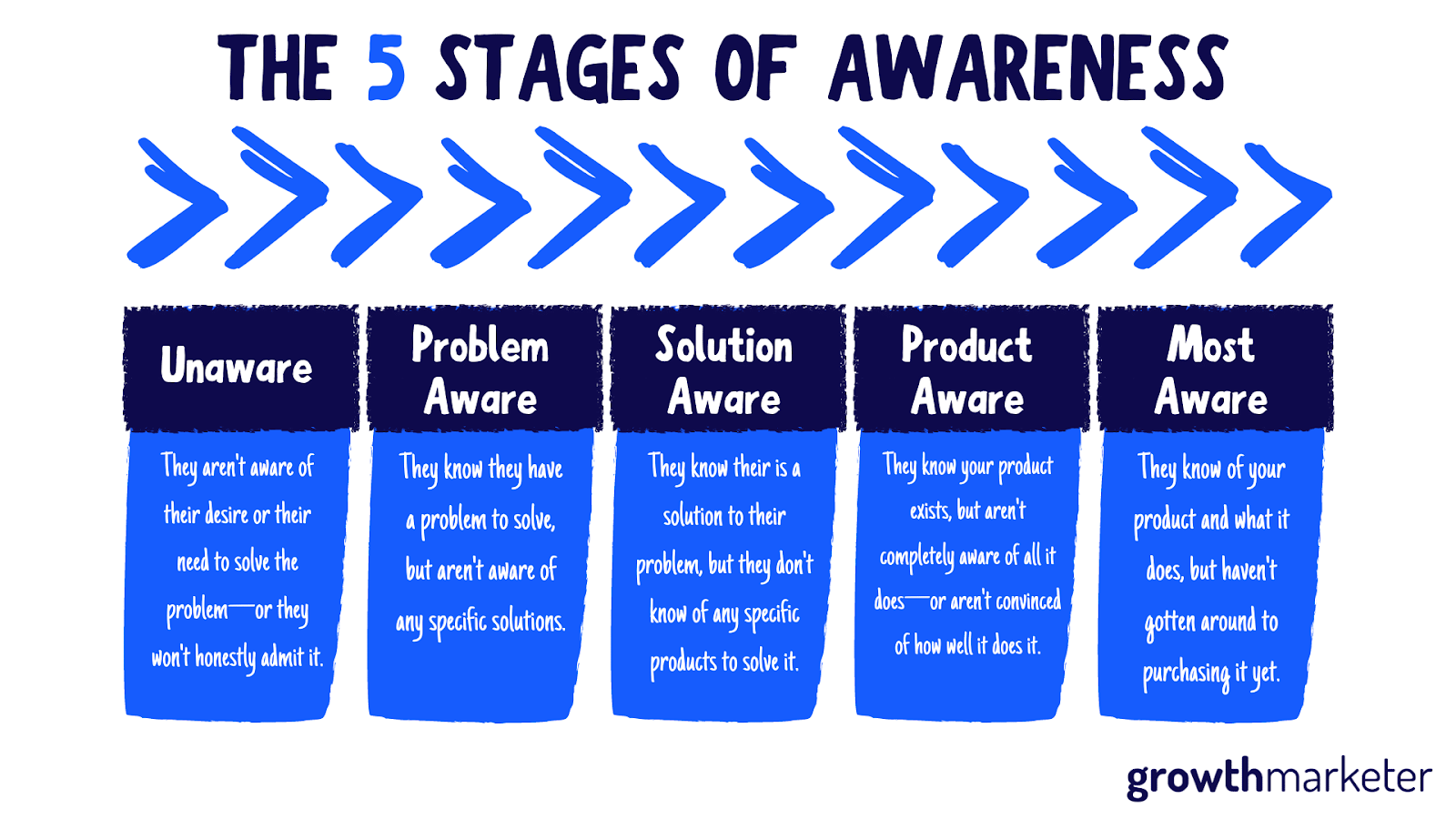Write the way you talk. Sell how you buy. Create what you’d want to consume.
Sounds great in theory, but it's difficult to put into practice. Especially when it comes to creating sales content. 78% of buyers believe reps don’t have relevant materials to share with them, and up to 70% of B2B content goes unused by sales. Why?
If you’ve ever worked in product marketing or sales, you probably have some hunches:
- Messaging focuses on products instead of buyers
- Collateral gets outdated quickly
- There’s no standard process for sharing, tracking, and organizing content
In the same breath, it’s never been more important to create and distribute effective sales collateral that helps prospects make purchasing decisions. The average B2B buyer’s journey involves consuming 13 pieces of content.
In a world with less face time, more competition, and complex buying committees, sales content is crucial in enabling reps, moving prospects through sales cycles, and driving revenue.
Let’s explore where sales content fits in the buyer journey, tips for distributing it effectively, and how to continuously optimize your content creation process.
The difference between marketing and sales content
Marketing creates demand, sales captures it. Through that lens, sales content gives prospects the information they need to make a buying decision. On the other hand, marketing teams produce collateral to educate your target audience about the problem and increase mindshare.
Of course, there’s still plenty of room for overlap. The 5 stages of awareness, a copywriting framework from Eugene Schwartz, helps us visualize the customer lifecycle and distinguish marketing from sales content.

Most sales content typically lives between “problem aware” and “product aware”. Its primary objective is to get buyers to consider, trial, and advocate for your product. Your buyer realizes that a problem exists, now you want to help them realize the benefits of adopting your solution and convince them to take action.
The tricky part is making pain points seem too hard to ignore, while making your solution too relevant to pass by. In other words, it’s a game of attention and persuasion.
Most sales content falls flat when it’s about us, not them. This can be corrected by being empathetic to the prospect’s needs and motivations, speaking in their language, and establishing context.
Types and real-life examples of sales collateral
Although it may seem daunting to decide what types of sales collateral to create, start by learning how your prospects consume content.
With a clear understanding of the ideal customer profile (ICP) and their decision-making process, great sales content helps overcome objections before they inevitably arise.
It’s tempting to reach for the trendiest format, but a three-letter acronym can ground us in what matters.
ROI. Not by its standard definition, however. Outside of anticipating return on investment, we can seek to be relevant, original, and impactful.
A few key questions to serve as your compass:
- Who are we selling to?
- What types of content will effectively answer their questions?
- What questions do they have and when do they ask them?
Problem aware: research reports, white papers, and ebooks
40% of B2B companies consume three to five pieces of content before ever engaging with a sales rep. If you look at how many calls you’ve denied or cold emails you’ve deleted in the past month, it’s safe to say this number will only continue to increase.
Sales content in the “problem aware” stage should demonstrate your company’s dedication to the problem, explain why your solution is the best, and most importantly, build trust.
Take Hubspot’s “Not Another State of Marketing” report, in collaboration with Wistia and Litmus, as an example.

Instead of selling the product, they highlight the importance of marketing automation as an overall category. Not only does this build rapport through authoritative information, but it also positions Hubspot as a brand that understands digital marketers. The title is a clever touch, as it pokes fun at the current paradigm and puts Hubspot at the center of the marketing ecosystem.
You could argue that this is a form of marketing collateral, but it can also be leveraged by SDRs or account executives to follow up with abandoned conversations or lost deals.
Partnering with other brands in your space or research partners is a great tactic for reducing the level of effort required to create quality content. Slack collaborated with IDC to publish “The Business Value of Slack”, which measures the value of its product across different departments. For any prospects having doubts about the benefits it could gain from using Slack, this piece of content offers hard data and social proof that’s tough to ignore.

If a research report seems bland, try this ebook on for size. Chili Piper launched the first ever graphic novel about lead routing, a fun and engaging story about an SDR’s life.

Going deep into the end-user’s problems shows you understand them and establishes relevance in the reader’s mind. By creatively showcasing the current situation, people feel heard and gather actionable advice to improve their process.
The best part is, you don’t feel like you’re being sold something. The unique storytelling format lends itself to being shared among key decision makers, giving revenue teams a reason to point to specific issues and shout “hey, this is me!”
Solution aware: podcasts, product videos, webinars, courses, and FAQs
Once prospects understand the problem, they’re ready to find and evaluate solutions. The focus shifts to finding the intersection between what your buyers care about and your product’s value.
Jason Oakley, Senior Director of Product Marketing at Klue, gives us a great mental model to position and sell against competitors. It’s called a value wedge–the place where your buyers' needs overlap with your unique selling points.

What does this look like in practice?
Creating a buyer guide shapes the market by making sure prospects consider important criteria when evaluating their options in your favor. Revenue.io executed this masterfully with their podcast, where they invited RevOps leaders to talk about how to navigate the SalesTech marketplace and build an optimal tech stack.
Notion’s Youtube channel is a gold mine for product videos. As a product-led company, their goal is to get new users to try out the platform and find a sticky use case. As you scroll down the page, the content quickly gets people into the sales funnel.
User stories and tutorials walk us through specific use cases, from planning for paternity leave to running onboarding for new hires. They also do a great job sourcing user-generated content by hosting office hours with ambassadors and sharing how people use their product across the world.

Sometimes, webinars seem like a lot of work for little reward. Done well, however, they get you closer to prospects. Intercom invested in a robust webinar library filled with tips for customer success (CS) and support leaders. By demonstrating how their product fits into the day-to-day lives of customer teams, their audience gains valuable information while becoming more receptive to Intercom’s solutions.
Although we love the layout, it could be organized more strategically. 70% of B2B companies want to see content organized by issue and pain point, not seemingly meaningless categories filled with marketing jargon.

When it comes to technical or SaaS products, courses are an underrated and often overlooked form of sales content that increases familiarity with prospects when they’re closer to buying. If you’re looking to help potential customers feel comfortable with your solution, sometimes the best way is to get their hands on the product.
This hour-long course by Ahrefs Academy is designed for both users and prospects. It guides digital marketers and SEO specialists through how they can use Ahrefs to improve Google rankings and generate more traffic. When prospects feel like they know your user experience and value proposition, they’re much more inclined to buy your product.

Product aware: customer stories, testimonials, and FAQs
You’ve done the work to get the prospect to know about you. How do you push those deals to the finish line and get someone to sign the PandaDoc? Reminding them that the juice is worth the squeeze.
Show them what life is like once they’ve adopted your product.
Customer stories and case studies are incredibly effective, with research suggesting that they can increase your win rate by 70% and boost sales by over 185%. Social proof is the driving factor here, as it helps prospects lean on evidence to support their buying decision. This is where it’s important to remember the dynamics of dark funnel, and how people buy today.

Imagine that your “champion” is a Demand Gen manager at a scaling tech startup. They’ll probably need to secure buy-in from other members of their team before you can close the deal. Customer stories give them ammunition to share internally, enabling them to point to how competitors and others in their industry are using your product to generate results.
It’s tough to choose just a few best-in-class customer stories, but Mutiny wins our vote. The copy is punchy and invites the reader into an actual story. Instead of getting caught up in describing product benefits, they dissect the buyer journey and help you understand the “why” behind the customer’s decision.
Sound like a lot of work? Take a page out of Descript’s playbook. They host an animated wall on their website with testimonials and social mentions.
What’s the difference between customer stories and case studies, you ask? Often used interchangeably, customer stories explain the before-and-after journey of customers whereas case studies center more closely around the product. If you’re thinking of ways to promote your customer stories and get the most bang for your buck, Notion’s guide is worth checking out.
Speaking of questions, we can’t forget about FAQs.
FAQ pages are a great way to close deals faster, earn trust, and boost SEO. Being able to anticipate what your customers will ask takes a blend of psychology and market research. Salespeople often have the best knowledge in this regard, so listening into a few Gong calls can quickly get the ball moving in the right direction.
Honestly, we were surprised to see that many B2B companies either didn’t have FAQ pages or didn’t do them well. Sigma stood out from the crowd, with questions that specifically addressed competing alternatives and common objections. Some favorites included:
- How fast can I get to value with Sigma?
- How does Sigma compare with traditional spreadsheets like Excel?
- How is Sigma different from other Analytics and Business Intelligence (BI) tools?
How to share sales content at the right time and place
Similar to how most content on the internet never gets read, most sales content never finds its way into a seller or buyer’s hands. Although there are plenty of possible reasons, it boils down to three:
- Usability: 65% of sales reps say they can’t find content to send to potential customers. And when they do, they still don’t know when to use it or who to use it with. This stems from the fact that most content is created for the top of the funnel, and isn’t relevant later on in the buyer journey.
- Shareability: Emails often have limits on attachment sizes or must pass through security gateways and spam filters. Not to mention the burden of dealing with flooded inboxes and the back-and-forth of multiple threads. Social media is great for building community and awareness, but often falls short when it comes to actually closing the deal.
- Reliability: There’s an overall lack of confidence that the latest content is up to date. Even when it is, some feel that it’s too high-level to actually help an interested prospect.
Modern problems require multi-threaded solutions. Prospects are looking for a complete story, not long sales presentations, data sheets, or infographics. They want the puzzle solved for them, and don’t have time to put together disparate pieces of collateral. When they’re ready to buy, they expect personalized sales content that’s easy to consume and reliable.
That’s where Dock comes in. Instead of having to reinvent the wheel every time a rep needs sales content, you create templated workspaces to fit a specific buyer’s needs. Take the Enterprise Sales Template for example.
By packaging your most relevant, best-performing content in a single digital sales room for the buyer, you can quickly deliver all the information a buying committee needs to make a purchasing decision.
Grab customer stories from a prospect’s competitor or industry, insert product explainers, and share FAQs in a single location. The best part?

You can track engagement and actually see what resonates with your buyer in real-time. No more guessing games or monitoring what anonymous hippos are doing in a Google doc. You can simply view what buyers click on to find out what content they care about most.
Distributing content internally is just as important as externally. Slack channels are a great place to start, but they can easily get cluttered. A shared workspace unifies product, marketing, and sales teams. Instead of having to sift through Google drive folders, everyone can work off of a central source of truth.
It’s easy to forget that sales content is just one piece of the entire customer lifecycle, from initial awareness through loyalty and retention. That’s why it’s important to zoom out to deliver a cohesive, branded customer experience that recognizes where sales fits into the process.
Strategies for optimizing and repurposing sales content
High impact, low effort. That’s the sweet spot of any sales content strategy–and the north star is usually fairly straightforward. Did this move the prospect closer towards buying our product, or not?
Although there are plenty of indicators that can help us answer the question, feedback from the sales team provides human context and helps isolate the value of specific content.
Ask:
- What pain points or objections did this sales content help solve or overcome?
- How did your level of confidence in winning the deal change because of this content?
- Do you think this content helps increase lead-to-opportunity conversion rates or decrease sales cycles? Why?
- How did you use this, and at what point in the customer lifecycle is this content most valuable?
- Are there specific use cases or buyer personas this content resonates with best?
By putting on the detective hat, we can get a better understanding of what actually enables salespeople and gives prospects more confidence. Once you know what context the message is being delivered in, it’s much easier to determine media types and create a sales enablement process or playbook.
Mix it in with key metrics to validate your learnings and test new hypotheses. The best way to do this is often through mini-pilots with control groups, and starting backwards from analyzing the behaviors of new customers.
With Dock, you can answer questions like:
- What content did they consume most, and in what order?
- Which roles in the buying committee viewed the content most?
- What questions or actions came up after viewing the content?
- Was there any correlation between content engagement and win rates, average selling price, or sales cycle length?
- How often was the content shared by sales teams?
Real-time insights into who’s viewing what content and when allow us to make changes on the fly. It truly does transform the sales and content creation process into smaller iterations.
- Ship content
- Get feedback
- Refine and repurpose
Dock your sales content so it drives pipeline and revenue
The best product doesn’t always win. The best customer experience does.
The way we buy has changed, so the way we sell has to catch up. The days of imposing our sales process on prospects are over. We have to adapt and make every interaction more buyer-centric. That requires learning from sales teams, listening to customers, and delivering a dynamic experience.
As Marshall McLuhan expressed, the “medium is the message”. The format of the content impacts how the content is received. B2B buyers want all the information they need to make decisions wrapped up in a bow.
That’s why sales content needs Dock. To meet buyers how they want to be met.
Click here to see how it works today.










.jpg)









